 |
 |
| Here is an ongoing list of interstitial recordings recommended by diverse contributors. These are works that do not fit neatly into any one category, often driving the music marketers crazy. Different contributors have different ideas about what makes a piece of music interstitial, which is why we have asked them to annotate and sign their recommendations. If you want to discuss these selections, or recommend your own, please join us on the IA Discussion and Bulletin Board |
| CDs |
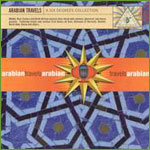 |
Arabian Travels: A Six Degrees Collection. (Six Degrees, 2001)
As with other samplers in their series, (the Traveler series, African Travels, etc.) Six Degrees rewards listeners with compelling CDs of interstitial music. Here the borrowings and samples are Middle Eastern. On "Sakarya," Bando de Gaia utilizes darbuka drums and Islamic vocals to create a weird and shifting landscape. The French group Ekova incorporates Moroccan percussion and the buzz of the gimbri (a bass instrument from the Atlas Mountains) in "Sabura;" and so forth. This is music between the lines, charged with energy, open to influence, and always surprising. (Gregory Frost) |
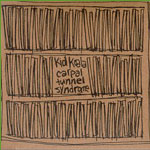 |
Carpal Tunnel Syndrome (2000) and Some of My Best Friends Are DJ's (2003) by Kid Koala
Kid Koala is the phenomenal turntablist — using vinyl like an instrument, Kid Koala scratches, interjects dialogue, reformats familiar rifts into new beats by the percussive scratching of the albums into amazing collages of sound, music, humor and rhythm. While these CDs are a blast to listen to — he's even better live. A martial artist with a turntable and sound. For more information about this turntable artist and a chance to see two wonderful short animated films ("Fender Bender" and "Basin Street Blues," as well as a film about Kid Koala's career, check out Kid Koala's homepage. (Midori Snyder) |
 |
Do the Day Over. Rinde Eckert (City of Tribes, 1995)
Rinde Eckert is a classically–trained scathingly original performance artist with something like a 4–octave range. "His songs range from pop and country to Celtic Blues and medieval chanting and the eight pieces hinge on the metaphor of a physical and spiritual pilgrimage" someone wrote in Pulse about Eckert's first album, Finding My Way Home (1992, DIW). On this, his second album, he also covers Richard Thompson and Bob Dylan, teams up with Bill Frisell and writes a beautiful love song. Hear some sample tunes at http://www.songtone.com/artists/Eckert/default.html. To me, this guy's body of work defines "Interstitial." (Ellen Kushner) |
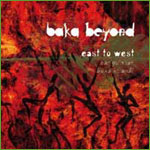 |
East to West. BakaBeyond (Narada CD 43725, 2003)
This group was founded by an English guitarist and singer who lived with the Baka pygmies in Cameroon in the early '90s. Their music weds traditional Celtic tunes and instrumentation to West African rhythms and Baka vocal music — combined with skill and respect for each. The result is a marvelously dance–able concoction that does indeed cross borders from East to West. (Terri Windling) |
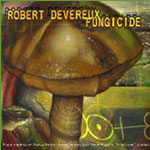 |
Fungicide. Robert Devereux (independent release, 2003)
This CD of experimental recordings inspired by Jeff VanderMeer's City of Saints & Madmen (and a short reading) serves as a soundtrack to that collection. Although most of the work might not be considered interstitial, except for the way in which it interacts with VanderMeer's fiction, one track, "The Man Who Had No Eyes," is defiantly interstitial. Devereux has taken the series of numbers that form the encoded story "The Man Who Had No Eyes" in City of Saints and transformed them logically into musical notes to create the song. As Devereux explains: "I was thinking since music is rather numeric, especially in computer music programs, it could be possible to translate the code directly into music. My idea is to take an encoded word like '13:1:5:3' and translate it to: length = 13 ticks in the MIDI sequencer; velocity (how hard you hit the key) = 10 (10 * 1, since there needs to be a good deal of variance in velocity); octave = ! 5; note = D (C=1, C#=2, D=3, etc)." The result is astonishingly melodic, and results in an even deeper encryption. (Jeff VanderMeer) |
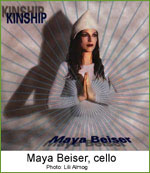 |
Kinship. Maya Beiser (Koch International Classics 3-7464-2, 2000)
The Israeli classical cellist works with contemporary "new music" composers drawing on world music sources: Palestinian oud player and composer Simon Shaheen joins her on one track with Glen Velez on frame drum; Evan Ziporyn based a piece on a Sanctus from the orthodox Georgian liturgy; Chinary Ung rescued nearly–lost Cambodian tradition and weds it to his American classical training. Maya Beiser was raised on an Israeli kibbutz by a French mother and Argentinean father, and finished her Masters degree at Yale. For this album she rejects the label "world music" — "What do you call 'world music' if you're from the world?" she asks. "It never occurred to me to think of all that music as separate or unrelated." A reviewer says the album "joins together a stream of musical ideas that…conveys meaning and excites emotion across boundaries of time, distance and culture." (Ellen Kushner) |
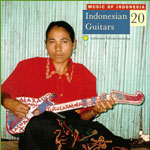 |
Indonesian Guitars. (Smithsonian Folkways, SFW CD 40447, 1999)
A ravishingly beautiful compilation of guitar music from Indonesia — the last disc in Folkways' extraordinary 20–cd series. This is virtuoso music, often heartrendingly lovely, always full of passion and clarity, and quite unlike any other guitar music you'll ever hear. (Warren Senders) |
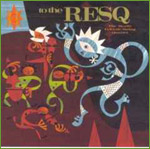 |
The Really Eclectic String Quartet. RESQ (Northeastern Popular Arts NR 5009, 1992)
Classical string quartets playing non–classical music has almost become a genre of its own (some people call them "jazz string quartets," citing the fabulous Turtle Island String Quartet, Soldier String Quartet, the Uptown String Quartet and the Greene Quartet as examples, but since their repertoire varies so widely within the scope of each album, I think you can't pin them down so neatly.). RESQ was one of the first, and this album rocked the house at our Fall 2003 Interstitial Arts party. Lead violinist Mimi Rabson and her posse arrange everything from Duke Ellington and "Louie Louie" to a traditional Romanian doina (hear it at http://www.meemzmusic.com/resq.html). One critic raved: "Bartok meets the Sex Pistols!" Now, where does that go in the record store? Their second album, which I haven't heard yet but is still available, is To the RESQ. (Ellen Kushner) |
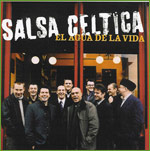 |
Salsa Celtica. El Agua de la Vida (Compass Records CD 4361, 2003) and The Great Scottish Latin Adventure (Musicrama CD 632427811923, 2000)
As someone who divides my time between Great Britain and Arizona, I find this wild combination of Latin and Celtic music completely irresistible. The music is weighted more to salsa side than the Celtic; nonetheless, there are fiddles and bagpipes here too, and the mix works surprisingly well. (Terri Windling) |
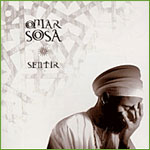 |
Sentir. Omar Sosa (Ota Records, 2003)
Jesse Hamlin of the San Francisco Chronicle calls Omar Sosa's music "the marriage of jazz and Cuban music — New World cousins related by African ancestry." This is most certainly correct. But wait, AfroCubaWeb.com calls his music "Hip Hop Jazz." This 2003 Latin Grammy nominee (category "Best Latin Jazz Album") was also recognized by the Jazz Journalists Association in New York as the "Afro–Caribbean Jazz Album of the Year." Omar! Is their no niche large enough or too small to contain you? This album has African drums, church bells, sonorous polyphony, spoken word, and dissonant shouting in English, Spanish, Yoruba, Arara, Arabic and English. The piano themes that drive all but a few of the tracks vary from precise and melodic variations to a more chaotic style reminiscent of Thelonious Monk. I am no music expert, but the salad of musical influences present on Sentir requires no expertise to savor and enjoy. It oozes interstitially. It's spicy, it's cool. Buy this CD and surprise yourself. (Kendrick Goss) Read an excellent review of this CD at: http://www.ink19.com/issues/december2002/musicReviews/musicS/omarSosa.html. |
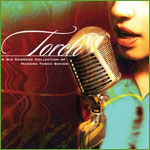 |
Torch: A Six Degrees Collection of Modern Torch Songs (Six Degrees, 2003)
Here Six Degrees has invited various contemporary, ambient–techno, and chill artists to create contemporary torch songs. While artists such as k.d. Lang and Carly Simon have paid homage to the traditional torch song in thematic albums, this is the first I've encountered that takes the jazz standard as a starting point from which to create something new and uncategorizable. Cassandra Wilson turns Neil Young's "Harvest Moon" into a torch piece with insect accompaniment. Sylk 130's live "Season's Change" includes electronic simian effects to move it into a Brazilian rainforest atmosphere. And Roy Nathanson hauls in Elvis Costello and Cyrus Chestnut to create a traditional piano bar coda, in "Fire Suite 1". (Gregory Frost) |
 |
Willy Schwarz, Home-Songs of Immigrants, Refugees and Exile. Willy Schwarz (Clear Spot, 057 EA CD 60203, 2000)
Schwarz is a brilliant multi–instrumentalist, singer and composer who has crafted a song cycle that pays deep respect to musical traditions from all over the world. Singing of the lives of displaced peoples, he evokes cultures as disparate as those of Africa, India, Mexico and Eastern Europe with compassion and remarkable authenticity. See our "Featured Musician" for more information and an interview with this remarkable musician. (Warren Senders) |
| Back to the top |
|
|
